Last week I returned from my scout trip to Iceland. And today I can finally share the beautiful hidden gems and must sees I found for our upcoming photography trip. I am beyond excited to share my findings with you.
To find the hidden gems we take the highland route, this is an off road route that is only accessible in July and August. This road will take you to the most beautiful places far away from the tourist hotspots.
Fagradalsfjall Volcano
We start with the Fagradalsfjall Volcano. This volcano is currently active. If the volcano is still active during our trip we will make sure to pay a visit.
Gullfoss Falls
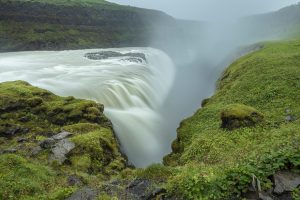
Gullfoss Falls is one of Iceland’s most iconic and beloved waterfalls. Hidden in the Hvítá river canyon. The waterfall has two stages. The first stage is 11 meters, whilst the second drop is 21 meters. The canyon walls on both sides of the waterfall reach heights of up to 70 meters.
Nýifoss

The Nýifoss waterfall was formed in 1939. Nýifoss is quite different from most waterfalls people like to visit. Because the water is 100% glacial water it is colored with mud, clay, dirt and all kinds of soil that the melting ice carries from under the glacier. The whole surrounding is like being in a desert or on the moon, but with a lot of water. All the different colors and structures make Nýifoss worth a visit.
Kerlingarfjöll
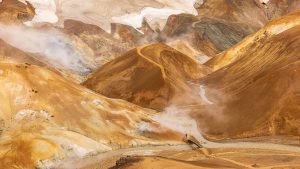 Kerlingarfjöll is one of the places that is only accessible in July or August. Kerlingarfjöll is a 150 km² volcanic mountain range in the highlands of Iceland. In the middle of this mountain range is the small but beautiful geothermal area Hveradalir where it steams everywhere, mud pools boil and the mountains glow orange-brown. All the different colors, structures and layers make Kerlingarfjöll worth a visit.
Kerlingarfjöll is one of the places that is only accessible in July or August. Kerlingarfjöll is a 150 km² volcanic mountain range in the highlands of Iceland. In the middle of this mountain range is the small but beautiful geothermal area Hveradalir where it steams everywhere, mud pools boil and the mountains glow orange-brown. All the different colors, structures and layers make Kerlingarfjöll worth a visit.
Hveravellir

Hveravellir is an geothermal area and has been called the most beautiful geothermal area in Iceland. With it’s multi-coloured boiling mud pools, fumaroles and beautiful hot springs, will Hyeravellir take your breath away.
Kolugljúfur Canyon
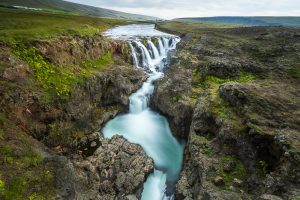
The Kolugljúfur is a canyon in the North of Iceland. This canyon is more then 1 kilometer long and 50 meter deep. In the beginning the Víðidalsá falls through the Kolufossar, and downstream there is another waterfall. Finally, the river ends in the lagoon lake Hóp.
Hvitserkur
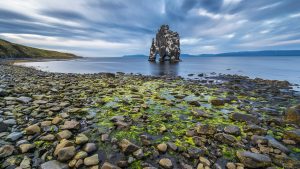
Hvitserkur is a 15 m high basalt stack along the eastern shore of the Vatnsnes peninsula, in northwest Iceland. The rock has two holes at the base, which give it the appearance of a dragon who is drinking.It’s a beautiful photographic location.
Goðafoss Waterfall
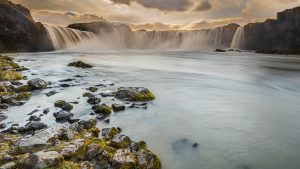
This spectacular waterfall is another highland route location. Goðafoss Waterfall is also known as the “Waterfall of the Gods.” Some believe that the name comes from the fact that the waterfall is god-like in beauty. The water of the river Skjálfandafljót falls from a height of 12 metres over a width of 30 metres. The river rises in the Icelandic highlands and runs through the Bárðardalur valley.
Some of you may know the Dettifoss waterfall. Known as the strongest waterfall of Iceland. Dettifoss being the strongest waterfall makes it very touristic. In my opinion the Goðafoss Waterfall is even more beautiful and unique in its kind.
Mývatn
Mývatn is one of my favourite places to visit. Mývatn is a lake situated in an area of active volcanism in the north of Iceland.The lake provides a number of waterbirds, especially ducks. The lake was created by a large lava eruption 2300 years ago, and the surrounding landscape is dominated by volcanic landforms. In my opinion definitely worth your visit.
Námafjall
 Námafjall is our second geothermal area. At this area you will see many smoking fumaroles and boiling mud pots, surrounded by sulphur crystals of many different colours.The gigantic size of the mud craters is what makes you go ‘wow’ at the sight of them.
Námafjall is our second geothermal area. At this area you will see many smoking fumaroles and boiling mud pots, surrounded by sulphur crystals of many different colours.The gigantic size of the mud craters is what makes you go ‘wow’ at the sight of them.
Stuðlagil Canyon
Stuðlagil Canyon can be found in East Iceland in the Glacier Valley called Jökuldalur. With the largest number of basalt rock in Iceland and a stunning blue glacier river, Stuðlagil is one of Iceland’s hidden gems. The basalt rocks make it such a unique and special place to visit.
Diamond Beach

Our trip continues towards the south of Iceland, passing the east Fjorden. Making a stop at the Diamond beach. The name says it all. At the Diamond Beach, the icebergs wash up on shore, creating a beautiful contrast with the black sand. This makes it the perfect location for photographers. Wildlife-enthusiasts also frequent the site as many seals call the beach home, and it is one of the best places in the country to see orcas from the shore.
Svinafellsjokull
Svínafellsjökull is connected to diamond beach and is the largest ice cap in Europe. Svínafellsjökull is part of the Skaftafell Nature Reserve, a place of popularity amongst hikers, photographers, and those with a passion for raw natural beauty.
Sólheimajökulll
Sólheimajökull is a glacier in southern Iceland, between the volcanoes Katla and Eyjafjallajökull. Part of the larger Mýrdalsjökull glacier. It embodies the frozen beauty of Iceland with its vivid blue tones and mountainous backdrop.
Reynisdrangar
Reynisdrangar are basalt sea stacks situated under the mountain Reynisfjall in southern Iceland. It is framed by a black sand beach that was ranked in 1991 as one of the ten most beautiful non-tropical beaches in the world.
Dyrhólaey
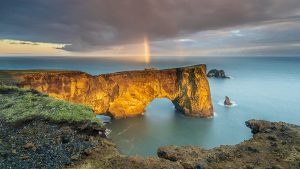
Dyrhólaey is a natural arch located on the south coast of Iceland. It was formerly an island of volcanic origin. The volcano erupted about 100 thousand years ago. The broad view makes it the perfect photographic location.
Sólheimasandur Plane Wreck
Sólheimasandur Plane Wreck is a remainder of a 1973 U.S. Navy DC plane that crashed on black sand. It is a popular photography location. To make it unique I want to incorporate night photography to make it a unique capture.
Skógafoss
We will finish the trip at the beautiful Skógafoss waterfall. Its located on the Skógá River in the south of Iceland at the cliff marking the former coastline. The Skógafoss is one of the biggest waterfalls in the country, with a width of 25 metres and a drop of 60 m. Due to the amount of spray the waterfall consistently produces, a single or double rainbow is normally visible on sunny days.

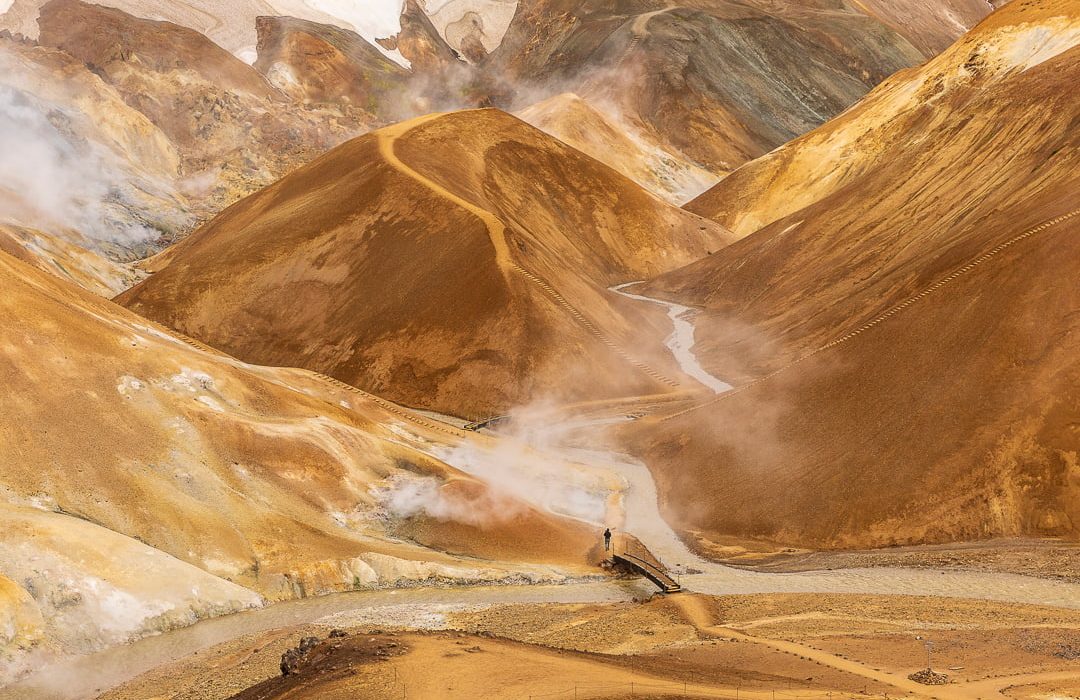





Recente reacties